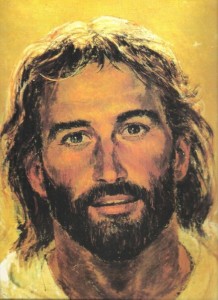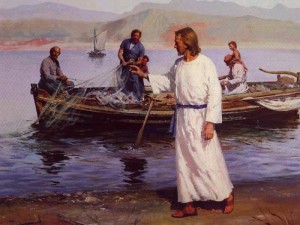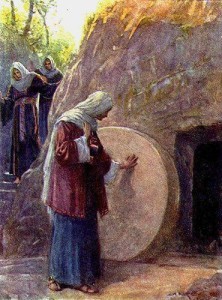Temptation the enemy of Salvation..
21 Sunday Apr 2019
Tags
Beyond the Cosmos, Christ, Christianity, Conservatism, Constitutional Republic, Everlasting, Experience, Family, Fellowship of the Minds, Freedom, Genealogy, God, Jesus Christ, Liberty, Life, Posterity, Self-Preservation, Teaching, United States, Wisdom
Share it
The first day of the week cometh Mary Magdalene early, when it was yet dark, unto the sepulchre, and seeth the stone taken away from the sepulchre. Then she runneth, and cometh to Simon Peter, and to the other disciple, whom Jesus loved, and saith unto them, They have taken away the Lord out of the sepulchre, and we know not where they have laid him. ~ John 20: 1-18 [1-2]
Both God and Man
We human beings have no control over the four dimensions we experience; we can neither gain a dimension nor lose one. But God’s control and mastery is complete. He created our four dimensions (ie length, breadth, height, and depth) and several more. Obviously, if God can create and enter dimensions, He can remove and leave them. With such capacities, He has free reign in choosing which ones He will use to interact with us. Further, He can choose to be bound to, or use one set of, dimensions for certain contexts, while choosing other sets of dimensions for other contexts.
Examples of Jesus’ control over dimensionality while He was with us in human form may be found throughout the four gospels. One appears in the account of the temptation by Satan.
Jesus, near death from starvation, was reminded of His supernatural capabilities. All Jesus had to do, Satan goaded, was to turn the stones scattered about Him into bread. Such a proposal would pose no temptation for any of us for the simple reason that we would be unable to act on it. The temptation might sharpen our hunger pangs when we heard mention of bread. It might tempt us to hurl some of those stones at our tempter. But to transform the stones into food would be impossible for us.
Satan’s approach in this temptation suggests that though Jesus had imposed on Himself the limitations common to humanity, He retained the capacity to deliver Himself from those limitations at any time and any place He chose.
A more explicit demonstration may be seen in the story of the stormy sea of Galilee crossing. While Jesus slept in the stern of the boat, a squall came up, threatening to capsize the vessel. Fearing for their lives, the disciples awakened Jesus.
When He saw the men’s panic, Jesus at once rebuked the wind and told the waves, “Be still!” Immediately, the wind died down and the surface of the water became completely calm. The incident shows the capacity of Jesus to transition between contexts.
First we see Jesus submitting to the wind and waves He created. In the next moment, however, Jesus exercises control and authority, as God the Father’s agent, over the elements.
In the first context, we see Jesus’ humanity. In the second, we see His divinity.
Jesus can be both God and man because He alone can choose when and where and with what part of His being and essence to operate in whatever form and over whatever dimensions He pleases.
When the disciples were visited by the resurrected Christ, they were able to see and feel the wounds of His crucifixion. Christ certainly had the power to eradicate these wounds, but He chose to let them remain.
One reason may be that these marks were essential to convince the disciples of the reality of Jesus’ bodily resurrection. The wounds identified Him as nothing else could have. And no doubt these marks helped him remind the disciples of what the Creator willingly endured to atone for their sins and of the permanent effects of that atoning sacrifice.
This kind of reminder may be of some benefit to future generations of disciples and even to the hosts of angels and demons.
Whether these marks of the cross will remain for us to see when we enter Christ’s presence we do not know. The book of Revelation, which gives more description of the heavenly realm and of our future than does any other portion of Scripture, gives no clear answer to this question.
Yet we can speculate that when the magnificence of the new creation is revealed to us, and when we begin to fathom the loss and the horror that hell represents, we may well be sufficiently reminded of the magnitude of the price Christ paid for our atonement. Not least of which was his example of overcoming any temptation thrown at us by the son of perdition.
So they ran both together: and the other disciple did outrun Peter, and came first to the sepulchre. And he stooping down, and looking in, saw the linen clothes lying; yet went he not in. Then cometh Simon Peter following him, and went into the sepulchre, and seeth the linen clothes lie, And the napkin, that was about his head, not lying with the linen clothes, but wrapped together in a place by itself. Then went in also that other disciple, which came first to the sepulchre, and he saw, and believed. For as yet they knew not the scripture, that he must rise again from the dead. ~ John 20:1-18 [4-9]
Even so, come, Lord Jesus. Amen. Maranatha. In HIM!!
********************
Text excerpted from Beyond The Cosmos Chapter Ten, by Dr. Hugh Ross…
Don’t miss part one from Good Friday: Immeasurable cost of our salvation
********************

Soli Deo Gloria!




 Link To DennisGHurst.com
Link To DennisGHurst.com


